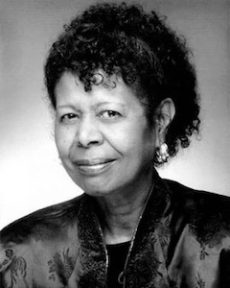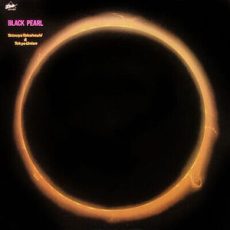
Daily Dose Of Jazz..
Bernard Cash was born in Scarborough, North Yorkshire, England on January 18, 1935. Music became his religion and he began his musical career as a trumpet player, gaining a reputation playing with different bands around the United Kingdom. At 25 he took up the double bass under the tutelage of Peter Ind. To earn a living he moved to London, England in 1961 with his wife, where he became involved in the jazz scene, and played with many musicians of note.
Returning to Yorkshire he founded the Light Music Course at Leeds College of Music. Recruiting his friend and mentor Ind, the two went about establishing the first real jazz course in the UK of which jazz guitarist Dave Cliff was an alumni. Leaving the academia of college he moved his family to Bridlington, on the East Yorkshire Coast, and worked as a peripatetic instrumental teacher. He continued to make regular trips to London to play jazz and organized jazz gigs in the North of England with many of the great players he had met.
He studied music at Hull University from 1974 to 1977 and while there Bernie organized numerous jazz gigs that included Lee Konitz and Warne Marsh. He continued to work in music education and maintained his own career. He held the position of Deputy Music Advisor for the Hull area, created the big band Great Jazz Solos Revisited, and scored some of his favourite artists’ solos, including Lester Young, Charlie Parker and Charlie Christian.
The big band enlisted the heavyweights of British jazz, Peter Ind, Peter King, Bob Burns, Art Morgan, Jim Livesey, Kathy Stobart, John Holbrooke, and Dave Cliff. He went on to create in conjunction with English playwright Alan Plater the jazz opera “Prez” based on the life of Lester Young. With the education system losing its luster he returned to London in 1986, playing jazz and being a traveling instrumental teacher.
He joined the BBC Northern Symphony Orchestra, Yorkshire Opera and the Royal Philharmonic Orchestra and toured with them. While on tour with the Royal Philharmonic in Germany, bassist Bernie Cash, who was an accomplished flautist, saxophonist and trumpeter, collapsed and died of a heart attack on October 7th, 1988.
More Posts: bandleader,bass,educator,flute,history,instrumental,jazz,music,saxophone

Jazz Poems
ELEVEN
From Velvet Bebop Kente Cloth
There ain’t/No word
I ain’t/Heard
ain’t/No word
Bird/Ain’t heard
Language is an/Inventor’s
>Privilege
I/Blow psalms.
I/Blow sinners’ deeds.
I/Blow prayer before death.
I/Blow curses.
I/Blow laughter.
I/Blow vocabulary of my axe.
You can’t/Hold
folks/Down who Be-Bop
but you/Kin hold
them/Up.
Every Be-Bopper/Renew
his/Subscriptions
to/Genius when he riff some
thing/New on his axe.
STERLING D. PLUMPP
from Jazz Poems ~ Selected and Edited by Kevin Young
More Posts: book,classic,collectible,history,jazz,library,poet

Daily Dose Of Jazz…
Ray Starling was born in London, England on Jauary 4, 1933 and began his musical training on piano. He started playing trumpet when he moved to the United States at age 16. He started his career as a member of the Kai Winding band and played the mellophone on two songs on Kai’s 1960 album The Incredible Kai Winding Trombones.
By the time he joined the Stan Kenton band in 1961, he had made several recordings not only on trumpet but also on flugelhorn and mellophone. He played in, and wrote for, Kenton’s band in 1961 and ’62. He replaced Gene Roland in the mellophone section, while Roland took the arranger position for the band. Starling played on the album Adventures In Blues consisting entirely of original compositions and arrangements by Roland.
After leaving the Kenton outfit, Ray briefly co-led with Joel Kaye the New York Soundstage Orchestra #1 that accompanied vocalists such as Annette Sanders and Tony Bennett. The name changed in the Seventies to the New York Neophonic Orchestra under Kaye’s leadership..
Starling continued to record through the ‘60s, notably in Johnny Richards’ big band and on J.J. Johnson’s 1965 big band album Goodies. He played piano in Buddy Rich’s big band in 1967.
Moving to Phoenix, Arizona is where he spent his remaining years. Trumpeter, mellophonist, pianist and arranger Ray Starling, who also played and recorded with Ray Eberly, Claude Thirnill, Johnny Richards, Sal Salvador, Peter Appleyard and Tony Ortega among others, died on May 15, 1982.
More Posts: arranger,history,instrumental,jazz,mellophone,music,piano,trumpet

Jazz Poems
ROSE SOLITUDE
For Duke Ellington
I am essence of Rose Solitude
my cheeks are laced with cognac
my hips sealed with five satin nails
i carry dream and romance of new fools and old flames
between the musk of fat
and the side pocket of my mink tongue
Listen to champagne bubble from this solo
Essence of Rose Solitude
veteran from texas tiger from chicago that’s me
i cover the shrine of Duke
who like Satchmo like Nat (King) Cole
will never die because love they say
never dies
I tell you from stair steps of these navy blue nights
these metallic snakes
these flashing fish skins
and the melodious cry of Shango
surrounded by sorrow
by purple velvet tears
by cockhounds limping from crosses
from turtle skinned shoes
from diamond shaped skulls and canes
made from dead gazelles
wearing a face of wilting potato plants
of grey and black scissors
of bee bee shots and fifty red boils
yes the whole world loved him
I tell you from suspenders of two-timing dog odors
from inca frosted lips
nonchalant legs
i tell you from howling chant of sister Erzulie
and the exaggerated hearts of a hundred pretty
women
they loved him
this world sliding from a single flower
into a caravan of heads made into ten thousand
flowers
Ask me
Essence of Rose Solitude
chickadee from arkansas that’s me
i sleep on cotton bones
cotton tails
and mellow myself in empty ballrooms
i’m no fly by night
look at my resume
i walk through the eyes of staring lizards
i throw myneck back to floorshow on bumping goat skins
in front of my stage fright
i cover the hands of Duke who like Satchmo
like Nat (King) Cole will never die
because love they say
never dies
JAYNE CORTEZ
from Jazz Poems ~ Selected and Edited by Kevin Young
More Posts: book,classic,collectible,history,jazz,library,poet

Daily Dose Of Jazz…
Tatsuya Takahashi was born on December 24, 1931 in Tsuruoka, Yamagata, Japan.
In the early 1950s Tatsuya played on US military bases and later in the decade moved to Tokyo, Japan. He worked with Keiichiro Ebihara from 1961, and by 1966 was leading his own ensemble, Tokyo Union, which remained active until 1989.
The 1970s saw him playing at the Monterey and Montreux Jazz Festivals. After leaving Tokyo Union, Takahashi worked in jazz education, and in 1996 founded a new ensemble, Jazz Groovys.
Saxophonist Tatsuya Takahashi died on February 29, 2008 in Tokyo, Japan.
More Posts: bandleader,history,instrumental,jazz,music,saxophone




